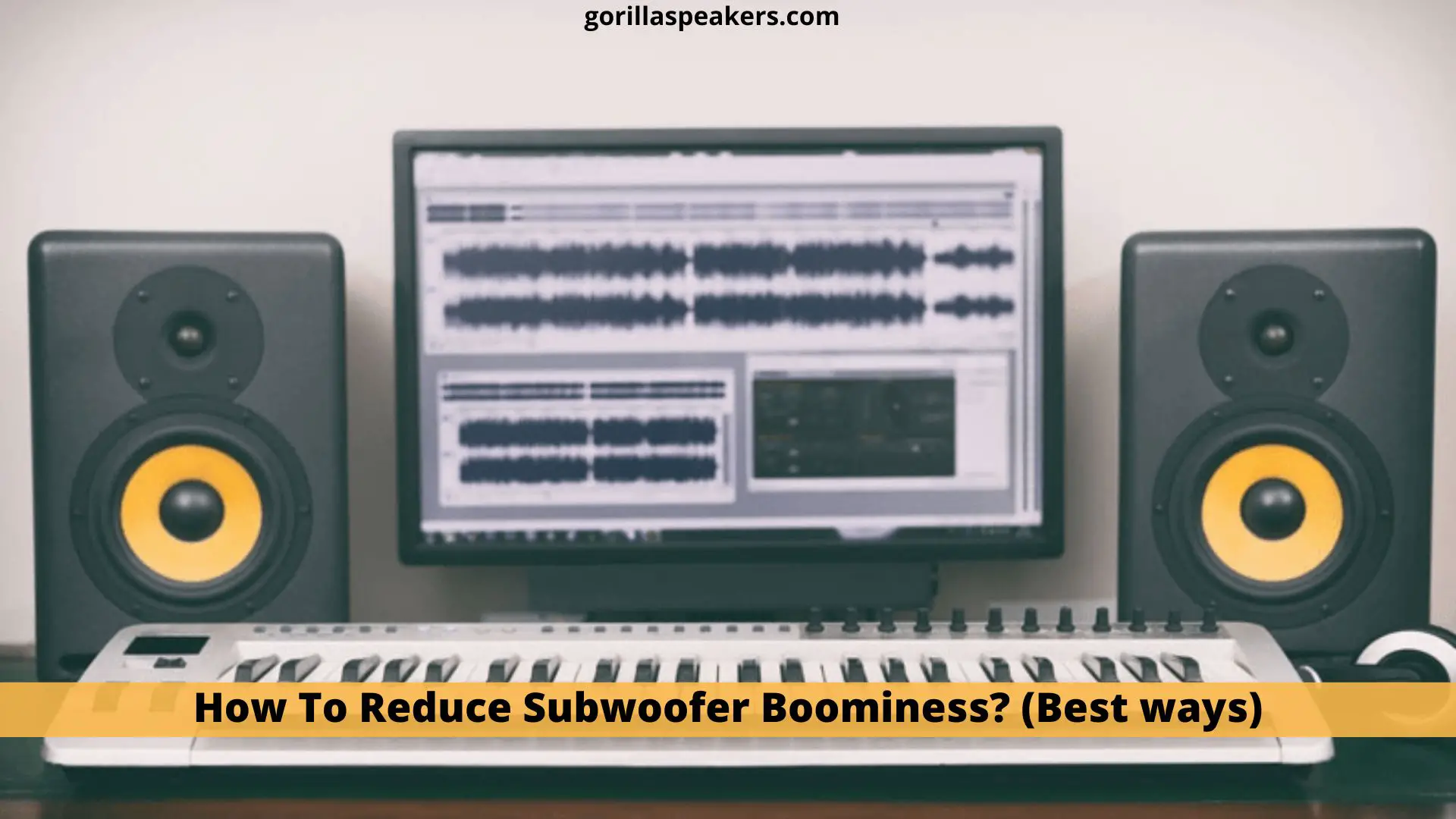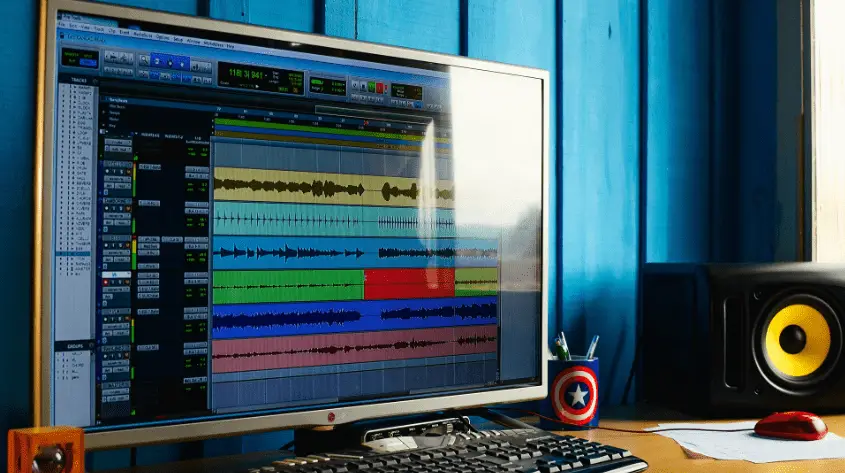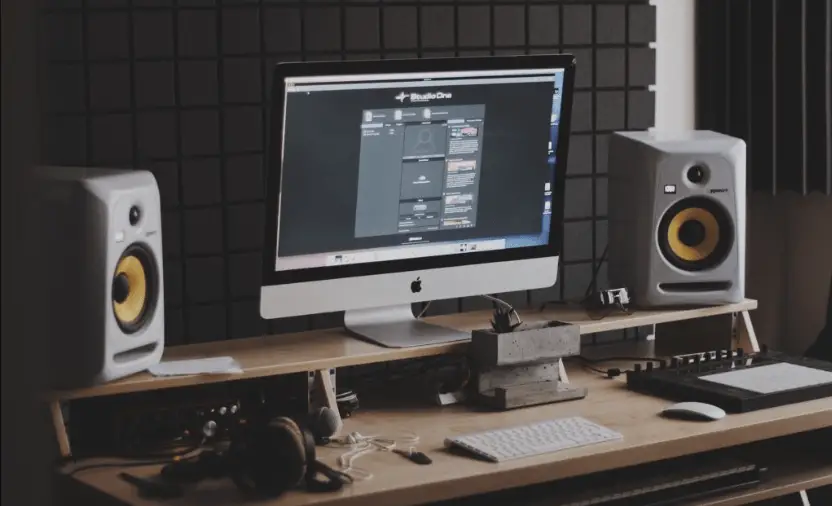Are you wondering if there was a way to make the subwoofer sound more “punchy”? Which would mean giving it a sound that was more crisp and clean while reducing the amount of unnecessary boominess that it produces.
The term “boominess” refers to excessive low-frequency energy that leads your speakers to produce extreme sustained effects.
If we turn the knob on the back of the subwoofer to boost its power, all that will happen is that the sub will become more “boomy.” but if you want it to have a significant volume but also want it to have a clear sound. Then you have to overcome the situations that cause boominess.
This boomy sound usually develops due to the subwoofer’s wrong placement and seating position.
Although it is impossible to completely do away with standing waves, there are ways to lessen their impact by setting up your seating position and subwoofer location.
How exactly do you plan to deal with this bass’s boominess? Let’s get to the bottom of this and find out the truth.
How To Reduce Subwoofer Boominess?
The location of the subwoofer within the area and the manner in which you are seated are the most common causes of boomy bass. Based on the dimensions of the space, certain low frequencies will be emphasized at specific spots, known as peaks, while other frequencies will be canceled out at specific locations, known as nulls.
This occurs due to the reflection of the sound waves against the walls of the room, ceiling, and floor of the room and because the wavelengths of particular frequencies are simple multiples or fractions of the room’s dimensions.
For instance, the wavelength of a particular frequency might be proportional to the room’s width. In contrast, the wavelength of another frequency might be proportional to either one-half or one-third of the length of the room.
When listened to at these frequencies, the peaks and valleys of the reflecting sound waves either reinforce or cancel each other out at certain stationary places across the space. The frequencies at which these waves occur are referred to as room modes, and the waves themselves are referred to as standing waves.
You won’t be able to eliminate standing waves entirely, but you can reduce their impact by adjusting where you sit and where your subwoofer is placed to achieve the best possible results.
The most effective strategy is to consult with an experienced specialist to evaluate the acoustics of your room. Because of this, you will be able to decide the best possible placement for your seats and subwoofer.
In addition to that, based on the results of the research, you can put in place acoustic remedies that are custom-made exclusively for your space. Nevertheless, the cost of the diagnosis and therapy might be relatively high.
Causes And Fixes For Subwoofer Boominess
1- Seating Position
It is difficult enough to provide a smooth bass performance with a single sub in any position; however, it is even more difficult to do so with more than one sub.
When setting up more than one subwoofer in a room with a rectangular shape, it is possible to achieve better results by arranging the subwoofers at the halfway point along opposite walls of the room.
It is feasible to attain the greatest results possible by positioning four subwoofers at the midway corners of a square or rectangular room.
There are certain rooms that are not rectangular, but there is a way to figure out where the subwoofer will perform most efficiently, regardless of the geometry of your space.
2- Subwoofers With An Inferior Design
Some subwoofers designed for home theaters may give the impression that they have significantly more bass than they actually do.
These subwoofers typically have a poor design and are installed in rooms that are much too large for them to function correctly. You might think that a subwoofer that is too small for the room will produce a less powerful sound than one that is the appropriate size for the space.
All too frequently, the little subwoofer will attempt to “keep up” with the performance of the other speakers in the system. When it cannot do so, the sub begins to bottom out, distort, and add noise from the port.
The most recent one is a significant obstacle. The solution to your boomy bass is maybe just upgrading to a subwoofer with more power.
This small subwoofer contributes a significant amount of noise rather than bass to the mix. You are referring to this noise when you say the bass sounds “boomy.”
The obvious solution to this problem is to go out and get a subwoofer that is proportionately sized to your room. How do you go about doing that? To tell the truth, it is not that difficult at all. You need to be aware of the space’s capacity in cubic feet (not just where your TV is, but the entire enclosed space).
3- Subwoofer Is Rattling Your Room
It is time to go for a walk if you are sure that everything has been connected appropriately and that you have selected the appropriate subwoofer for the area.
Walk around the room while paying close attention to what you hear. There must be something else going on if the “boominess” persists no matter where you are. You might discover that one side of the subwoofer is significantly louder than the other. It’s possible that there are a few different spots around the room.
It’s likely that the subwoofer is making the noise you’re hearing because it’s shaking the room. This is the home theater equivalent of an issue that first-world countries face.
Having said that, it is still something that needs to be corrected. Your subwoofer needs to be disconnected from the floor as the initial step in this process.
Simply defined, this implies that you should position something cushioned between the base of your subwoofer and the surface it is resting on. Because of this, sound waves will not be able to enter the structure of your home directly. Also, the volume of your subwoofer will not decrease as a result of doing so.
If you are still able to hear anything in your room rattling or vibrating, you will need to either disconnect them (in a manner analogous to what you are doing to your subwoofer) or dampen them. The usage of museum putty and rubber insulating tape is something that we enjoy doing. These will eliminate the majority of the rattling that is occurring in your theater.
4- Positioning Of The Subwoofer In The Room
You shouldn’t place your subwoofers so that they are against a wall because, as the picture to the right indicates, low frequencies have a propensity to pile up around the boundaries of walls.
Because of this, you shouldn’t position your subwoofers so that they are against a wall. It is not a good idea to stand in the exact center of the room in any dimension because this location usually always coincides with a peak or a null. Thus it is best to avoid standing there.
When you walk around the room, the booming bass seems to go through phases of ebbing and flowing most of the time. It will be at an excessive level at one location, while at another, it will nearly totally disappear.
The acoustics of the room are to blame for this quite typical and common occurrence. The bass waves interact with one another as they travel around the room and bounce off of the walls. Because of these interactions, the bass might become either louder or quieter.
Adding room treatments to your space is the real solution to the problem. To a greater extent, the better (to a certain point). This will result in a significant reduction in the number of reflections. However, these sound absorbers are not very effective at all when it comes to the lowest bass. The best course of action is to acquire a second subwoofer and set it up in the appropriate location.
This defies common sense, and it would appear. If your bass is too boomy, adding more bass probably isn’t the best solution. However, it is.
The presence of such deep, rumbling bass is due to the way in which the sound waves are interacting with one another. When you install the second subwoofer and position it in the appropriate location, you will notice that the bass is more EVEN (not even MORE bass).
This means that the bass will have the same volume regardless of where you are in the room. Because of the boomy bits, if you don’t have even bass, you will have to turn down the volume on the subwoofer, which will result in overall less bass being produced.
How To Double Check:
- Could you tell me what the trim level is on your subwoofer? Your subwoofer has an excessively high volume level if it is at -10 or -12. Reduce the amount, and then run your automatic setup again until the trim is either closer to zero or in positive digits.
- Have you checked to see whether the volume on all of your speakers is turned down? If not, adjust the settings on the receiver to reflect the new information.
- Make modifications to the inputs. Is the booming bass present on all of your different sources of audio? If this is not the case, you should investigate the settings of the boomy source.
- Turn off any DSP modes that could be contributing to an augmented bass sound.
Fixing Subwoofer Boominess- General Tips
Here are a few pointers that apply more generally. Because low frequencies have a tendency to accumulate near the limits of walls, you should avoid placing your seats against the wall if at all feasible.
It is quite challenging to generate a smooth bass performance with a single sub in any position, but it is especially challenging to do so for more than one seat.
It is possible to produce better results for more than one seat by positioning two subs at the midway points along opposite walls of a rectangular room. Positioning four subs at the halfway points along opposite walls of a rectangular room achieves the best results possible.
Of course, not all rooms are rectangular, but regardless of the shape of your space, there is a method for determining where the subwoofer will function most effectively. The movement is known as “the subwoofer crawl.”
To begin, position the subwoofer so that it is facing you when you are in the listening position. That’s right; do not position it on the ground.
After that, play an audio file that is well-known and has a high emphasis on bass, preferably without the primary speakers. (Be sure that the main speakers on your AV receiver are turned down to the “small” setting so that the low frequencies are sent to the subwoofer output.)
Playing a low-frequency test tone is another option. This tone may be found in the final chapter of the Audio portion of THX Optimizer, which is included on the majority of THX-certified DVDs and Blu-rays. In this chapter, a frequency sweep is played that goes from 200Hz all the way down to 20Hz.
It is also possible to use pink or white noise, both of which can be obtained on a variety of audio test CDs. You should be able to select the subwoofer signal if your receiver enables you to play its internal test signals manually.
You should put the track you choose on repeat so that it keeps playing over and over again. The next step is to listen to the sound while crawling around the room with your head close to the ground.
Crawling along the walls is very important, given that you probably don’t want the sub to be in the center of the room. As you walk around, different frequencies will become more or less prominent; the goal is to find the location where all low frequencies are well-balanced, with none being unusually prominent or absent.
That is the optimal location for the subwoofer, which will help to reduce the boominess experienced at the listening position.
What About Equalization? Wouldn’t That Help?
It’s actually a lot less than you might assume. To begin, you will need an equalizer that is fairly advanced, more advanced than the equalizers that are included in the majority of AV receivers, which may be rather pricey.
And while it is possible to lower the level of the peak frequencies, this does not allow you to raise the level of the nulls; this is because the standing waves will always cancel out at the sites in question, regardless of the level.
Also, lowering the volume of a peak helps in the area in which it is located, but doing so lowers the frequency of that peak in other areas, which makes the sound worse for the individuals who are seated in other areas.
Why Do Subwoofers Sound Boomy If The Crossover Setting Is Over 80hz?
The frequency response of a subwoofer is intended to be linear from around 125 Hz on down. However, in order to get rid of high frequencies, we nearly always utilize a low-pass crossover filter. The driver itself has a natural resonance that will restrict the bandwidth it can produce.
When we play high frequencies through a subwoofer, the sound quality will be poor, create distortion, and impact the mid-range. Additionally, the higher frequencies will have a massive amount of beaminess, which indicates that the only way to hear them is from a very certain sitting position.
One of the contributing factors is the way the room around the subwoofer becomes excited. And this is because of the following two reasons, which spring to mind right away: To start, we’ll look at the wavelength of bass frequencies. Two, the resonances of the room
Regarding the initial concern, given that a wave with a frequency of 50 hertz has a length of 22 feet, it is impossible for it to repeat itself in the normal living room (which would likely be under 22 feet in every dimension).
However, at a frequency of 80 hertz, the wavelength is 14 feet, which is roughly equivalent to one of the diameters of a number of rooms.
As a result, the beginnings of a reinforcing impact can be seen. (And as you get above 80 hertz, it becomes even more significant because the higher frequencies make numerous cycles within a standard room.)
Concerning the second, if you play test tones at various frequencies via any subwoofer in practically any room, you’ll discover that there are particular frequencies at which the room resonants more than others.
This can be determined by finding the frequency at which the test tones are being played (surfaces and objects vibrate audibly). As someone who has engaged in this activity repeatedly over the course of many years and in a variety of settings, I can vouch for its validity.
It should come as no surprise that the excitation behavior will change depending on the material that the room is built of, the dimensions of the room, and the location of the subwoofer in the room.
If you raised the crossover point to the point where you could hear the beginnings of boominess and then moved the sub to a variety of locations within the room, I have no doubt that you would discover that the level of boominess varied from one spot to the next.
Moving the sub away from walls yielded the smallest amount while moving into corners yielded the smallest amount of all possible outcomes. (Of course, going away from walls would result in lower overall output, but you would notice a more linear pattern of activity.)
Obviously, the caliber of your subwoofer is also an important consideration in this regard. When compared to a less well-built subwoofer, a better quality driver with stiffer cone material, and a more robust cabinet, the cabinet is always a critical factor with any speaker would have less boomy behavior (or possibly none at all).
Less expensive subwoofers, as Loring Chien points out, struggle to keep up with higher frequencies. Those with higher quality are well capable of carrying out the task.
Conclusion
When they use their subwoofer, many customers are frustrated with the boominess that the device produces. The quality of having an excessive amount of high-frequency energy, often known as “boominess,” causes the speakers in your system to produce extremely abrupt transient effects.
This could be the result of the woofer being overworked to the point where it overloads, or it could be the result of the cabinet not being large enough to accommodate the size of the speaker, causing it to resonate uncontrollably.




